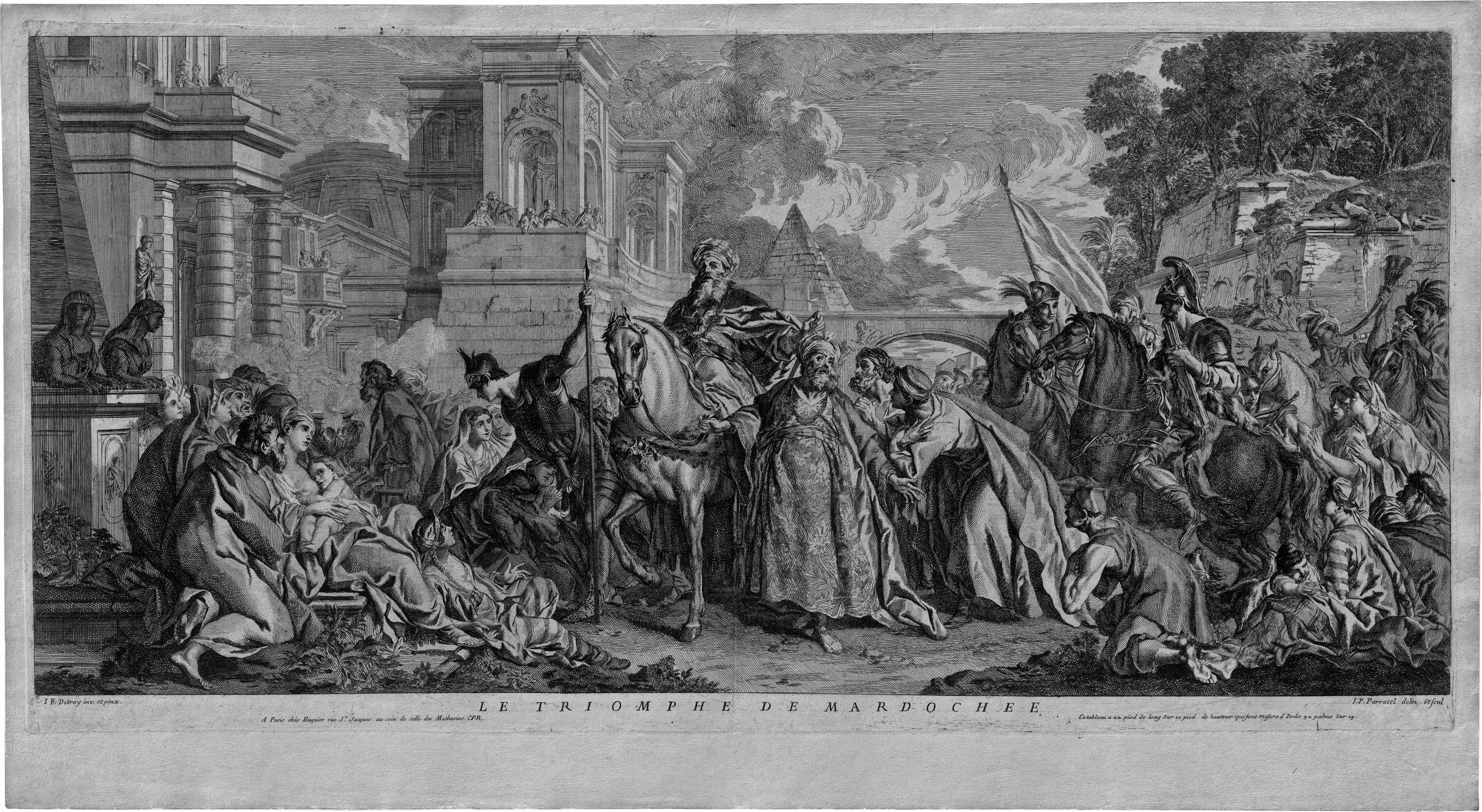Loading the page ...
Pierre Ignace Parrocel
(1702 Avignon – circa 1775 Rome)
Mordechai’s Triumph. Etching. 39.4 x 78.5 cm. Circa 1740. Baudicour 6, Le Blanc, vol. II, p. 143 (J.-B. Parrocel). Watermark: Letters.
Pierre Ignace Parrocel, a painter and etcher born in Avignon in 1702, is one of the less well-known members of an influential, widely ramified dynasty of artists which included such prominent figures as his great-grandfather Georges, his grandfather Louis, and Joseph, Pierre and Ignace Jacques Parrocel. When still a young man Pierre Ignace began training with his brother in the studio run by his father Pierre Parrocel and then went to Rome, where he was first active as a pensionnaire at the famous Académie de France. Given the many artists named Parrocel, it is very difficult to accurately pinpoint Pierre Ignace’s style of painting and in the past works in his relatively modest printed oeuvre have also regularly been confused with those of other members of his family.
The present large-format composition entitled Mordechai’s Triumph was previously erroneously thought to be by Etienne Parrocel. In actual fact it is Pierre Ignace’s undisputed masterpiece. An impressive etching, it portrays a scene from the Old Testament Book of Esther in which Mordechai, the king’s guardian and Esther’s adoptive father, rides in triumph through the streets of Susa after having cleverly foiled his rival Haman’s plans to destroy all the Jews in the realm. King Ahasuerus (also known as Xerxes) subsequently punished Haman by ordering him to lead Mordechai’s triumphant procession through the city before being executed. This very elaborate, multi-figure composition has its origins in a monumental painting made by Jean François de Troy in Rome in 1738/39 which is now in the Louvre in Paris (completed 1739, 329 x 710 cm, inv. no. 8219). De Troy was appointed director of the Académie de France in 1738 and at about that time he produced a series of seven scenes from the Old Testament that served as designs for precious tapestries woven between 1738 and 1794 which now form part of the Royal Collection in Windsor Castle. Parrocel’s inspired transfer of de Troy’s original design to the printmaking medium has all the hallmarks of a talented and versatile etcher. This extremely rare print exists in two different states, of which Baudicour had no knowledge, and was also published at a later date by Basan. It is on offer here in the first state with the address of the publisher Gabriel Huquier (1695– 1772). A very fine, strong and contrasting impression with margins. An unobtrusive vertical centre fold, minor ageing and handling marks, otherwise in very good condition.
Contact us for further information